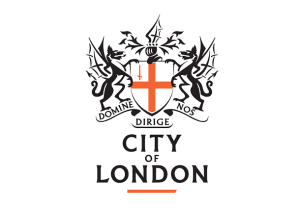Pruning is all part of keeping your plants healthy, as much as it is about giving them a tidy-up. Because with pruning, you help with the weight of your shrubs, and stop pests and disease in their tracks.
In this blog post, we’ll look at three common indications that your box hedge is ready for a prune. And if you’d like to know more about caring for your shrubs, you can also check out our other guides:
With patience, persistence and maintenance, you can ensure your box hedge looks stunning – and stays sturdy – for years to come, whether it’s a garden boundary or a feature.
About box hedges
The box hedge – or Buxus Sempervirens, to give it the Latin name – is a popular type of shrub, partly because it stays green throughout the year. It’s a common plant that gives your garden lots of colour and attracts wildlife, and because it’s fairly slow to grow, it doesn’t demand much upkeep to stay looking its best.
3 signs your box hedge needs trimming
Your box hedge doesn’t just create a boundary or look pretty outside your front door. These shrubs bring greenery into your garden, create the perfect balance of light and shade, and can even be a popular nesting site for birds. But controlling their spread – as with any hedge – is important. Here are 3 signs it’s time to take up the shears.
#1: It’s starting to lose its shape
While a typical box hedge only needs trimming a couple of times a year (usually April and September), ornamental box hedges will need a little more handiwork. Regardless, neglecting maintaining your shrub can lead to a bushy, overgrown appearance and could even make the plant appear off-balanced (for example, spindly at the bottom and thick at the top, or vice versa).
#2: It’s been damaged
Wind, rain, even accidental damage – it happens! Thankfully, pruning box hedges can not only mitigate the damage, but can prevent other issues, like falling branches. If you’re anxious about how to tackle shrub damage, we’d recommend speaking to one of our expert arborealists.
#3: It’s stopped growing altogether
Did you know that pruning box hedges can actually encourage growth in the plant – especially when undertaken at the start of the spring growing season? Box hedges typically grow quite slowly, so it could be that you just aren’t noticing its growth.
Tips for trimming a box hedge
Trimming box hedges is pretty straightforward – especially because, as we’ve mentioned, it only needs tending to a couple of times a year. We’ve shared some tips below for the best way to trim hedges:
- Prune when the plant is in its growing season (spring to autumn). It’s really important to begin your pruning in the spring, before you start to see new growth.
- Avoid cutting in wet weather (for the reasons we’ve mentioned above)
- Trim more regularly if you want an ornamental style. This helps to ‘train’ the branches into the right position to create the shape you want. You’ll need to do this monthly until you start to see results.
Reasons to prune regularly
As well as the points we’ve already covered (disease, pests, growth), a spot of pruning can help to create more light in your garden and control the spread of your shrubs. Trimming box hedges is key to preventing them from growing too large – because large roots can cause disputes with neighbours over boundaries and impact the foundations of your home, if grown too close to your house.
Other things to keep in mind
Like any plant, trimming box hedges is about getting the basics right – nutrients, water and light.
- Buxus Sempervirens does exceptionally well when fertilised twice a year. We’d recommend using nitrogen-based fertiliser in the spring and potassium-based fertiliser in the autumn. You’ll need to be mindful that the variety you choose won’t be harmful to other plants and animals, though.
- Box hedges love water, so damp soil is ideal (even in the winter months). But that doesn’t mean you want the leaves to get too wet. This type of plant takes quite a while to dry off, and damp leaves could attract insects or lead to rot.
Why to invest in professional hedge trimming
Whatever the reason for trimming your box hedge, choosing a professional can save you time and doesn’t need to cost the earth. In fact, sometimes the best way to trim hedges involves calling in an expert. With customers in locations like Bromley and South East London, our specialist team provides arborist services for gardeners and growers who want to keep their shrubs looking their best and healthiest.
Quick FAQ
Still got questions? We’ve got you covered. Take a quick look at some of the common things we get asked below.
How much does hedge trimming cost?
We price up our services according to factors like the size of your shrub, its location, and its general health (for example, whether you’re dealing with an outbreak of pests or you have disease to take care of). So, all our quotes are tailored to the customer. To see what you might pay in Bromley and South East London, contact our arborealists today.
How do I find a hedge trimming service near me?
We’re conveniently located for customers in South East London, including areas like Bromley. But if you’re not sure whether your postcode is covered, just give us a call and we’ll see if we can help.
Will a dead hedge grow back?
Pruning is all part of keeping your hedge healthy, and can encourage new growth. If your hedge does fall prey to insects or disease, or any other factors (like competition with neighbouring plants), it’s possible for it to recover with the right care and attention. Saying that, sometimes plants die altogether. If you’d like our experts to diagnose your box hedge and make some recommendations, talk to our tree surgeons.
















